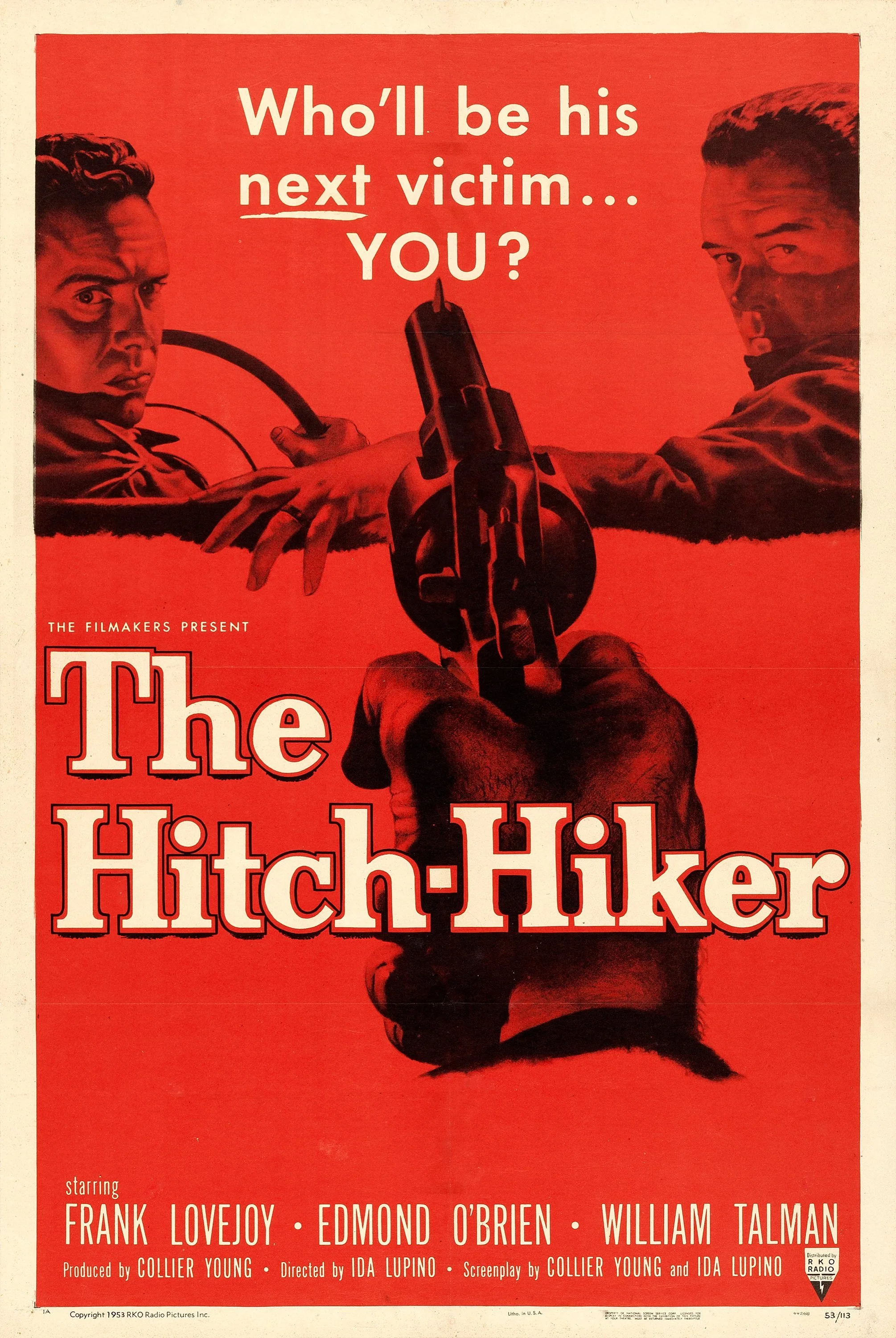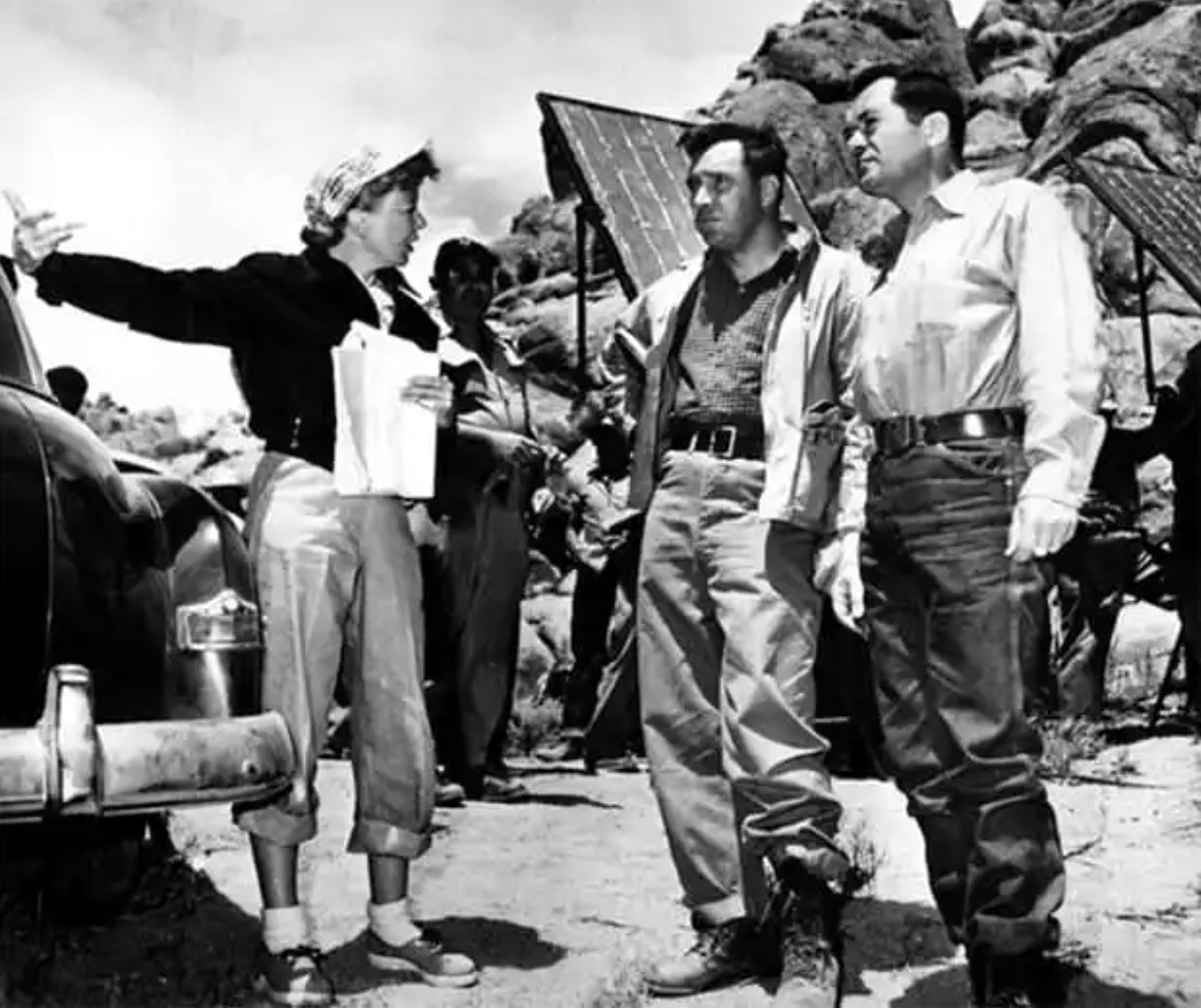THE HITCH-HIKER (United States, 1953, Ida Lupino)
/As a screenwriter and director, Ida Lupino had an eye for the emotional truth hidden within the taboo or mundane, making a series of B-styled pictures which featured sympathetic, honest portrayals of such controversial subjects as unmarried mothers, bigamy, and rape ... in THE HITCH-HIKER, two utterly average middle-class American men are held at gunpoint and slowly psychologically broken by a serial killer. In addition to her critical but compassionate sensibility, Lupino had a great filmmaker’s eye, using… the gorgeous, ever-present loneliness of empty highways in THE HITCH-HIKER to set her characters apart. —John Krewson
Ida Lupino’s film and television career extended from the early 1930s through to the late 1970s. She proved to be a versatile figure in the movie industry, beginning as an actor in England as a teenager and later transitioning in Hollywood to an actor, screenwriter, producer, and director. As a filmmaker, she worked mostly in the independent vein, establishing a production company titled The Filmakers (which she co-founded with Collier Young, her husband at the time). Directing mostly social issue films between 1949 and 1953 (including 1949’s NEVER FEAR), she went on to have a prolific career as an actor and director of episodes from innumerable television series, ranging from THE UNTOUCHABLES to DR. KILDAIRE.
A singular importance of Lupino’s 1953 feature THE HITCH-HIKER is that it is the only classic American film noir directed by a woman. In 1998, the film was selected for the National Film Registry by the Library of Congress as being “culturally, historically or aesthetically significant. In THE HITCH-HIKER, Ray (Edmond O'Brien) and Gilbert's (Frank Lovejoy) fishing trip takes a terrifying turn when the hitchhiker (William Talman) they pick up turns out to be a sociopath on the run from the law. He's killed before, and he lets the two know that as soon as they're no longer useful, he'll kill again. The two friends plot an escape, but the hitchhiker's peculiar physical affliction — an eye that never closes even when he sleeps — make it impossible for them to tell when they can make a break for it.
Inspired by the true-life murder spree of serial killer Billy Cook, THE HITCH-HIKER is a tension-laden saga set in the arid and foreboding landscape of the Mexican desert. While researching for the film, Lupino visited Cook at San Quentin Prison, where he granted her exclusive rights to his story. THE HITCH-HIKER was independently produced, which allowed Lupino and Collier Young to work from a treatment by blacklisted writer Daniel Mainwaring and tackle an incident that was too brutal for the major studios to even consider.
A number of factors attracted Lupino to directing THE HITCH-HIKER — one being the challenge of directing a gritty, all-male road movie in the style of her mentor Raoul Walsh, who had previously directed Lupino in ARTISTS AND MODELS (1937), THEY DRIVE BY NIGHT (1940), HIGH SIERRA (1941) and THE MAN I LOVE (1948). With a B-movie budget of $200,000, THE HITCH-HIKER went into a five-week production schedule beginning in late June 1952. Location shooting took place around Lone Pine, California, the same location used for HIGH SIERRA. Cinematographer Nicholas Musuraca had shot a number of classic films noir, including OUT OF THE PAST (Nicholas Ray, 1950) and CLASH BY NIGHT (Fritz Lang, 1952). The film’s striking visuals are therefore imbued with his expertise and experience working in the genre. He exaggerates the unstable desert climate and employs gothic shadows to suggest that Lupino’s protagonists are as much in battle with the scorched landscape as with their unhinged captor. The penetrating close-ups inside Ray and Gilbert’s car are as ominous and claustrophobic as those from any film noir of the period.
IDA LUPINO (LEFT) DIRECTING EDMOND O’BRIEN (CENTER) AND FRANK LOVEJOY (RIGHT) ON THE SET OF THE HITCH-HIKER IN 1952.
Lupino’s character study of these men is compelling thanks to her ability to deconstruct their macho exteriors. Ray and Gilbert bicker and squabble about ways they can escape the hand of their captor, stressing that only through their commitment to one another can they both survive. For this reason, the film plays as an intense and surprisingly progressive buddy movie lacking the expected stoic glorification of heroism. It is more a lesson on survival in the direst of environments, as the heroes exhibit fear and pray for the hand of law to prevail.
Lupino’s focus on the captor is perhaps the most fascinating element of this film. Thanks to her inquisitive direction and Talman’s layered performance, the sad, volatile vulnerability of a damaged madman emerges. In scenes of raw emotional explosion, Talman seems to revel in a performance that is savage, lucid, and bracingly authentic.
THE HITCH-HIKER
(US, 1953)
Director: Ida Lupino
Screenwriters: Ida Lupino, Collier Young
Cinematographer: Nicholas Musuraca
Cast: Edmond O'Brien, Frank Lovejoy, William Talman
- 70 minutes
- 35mm
- B&W
- Sound
Distribution Format/s: DSL/Downloadable 1080p .mp4 file on server
Published By: Kino Lorber
Institutional Price: $500
To order call: 212.280.8654 or click here for information on ordering by fax, e-mail or post.





